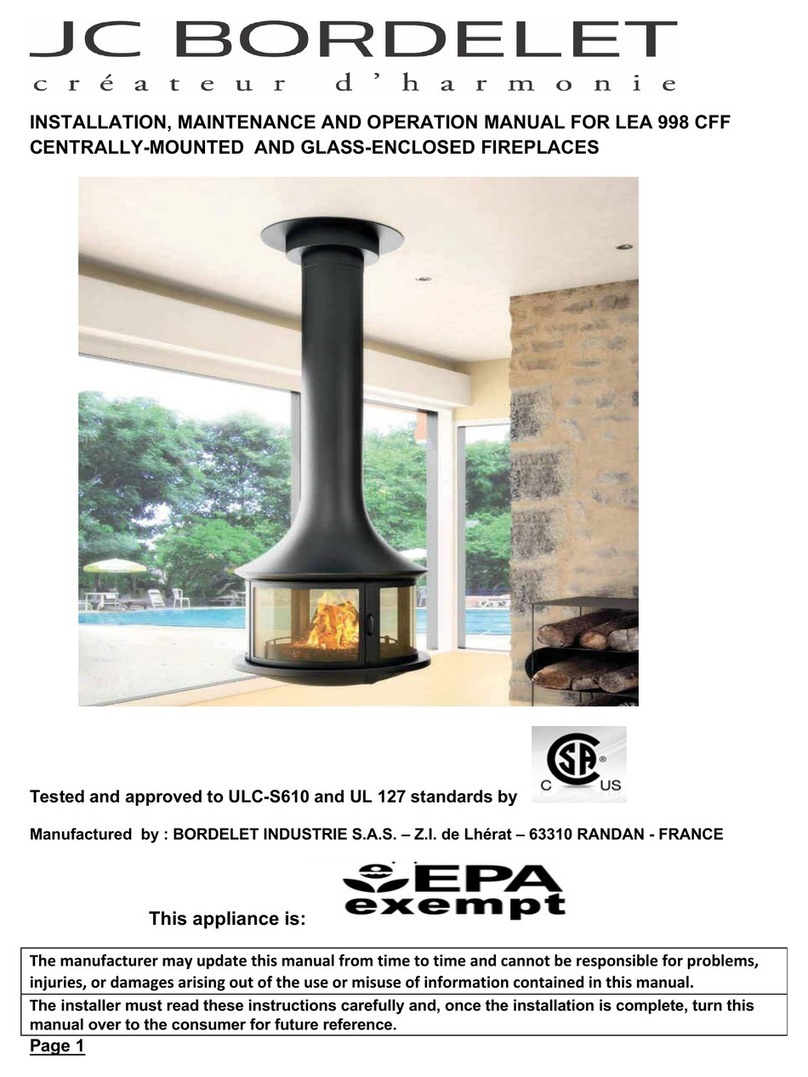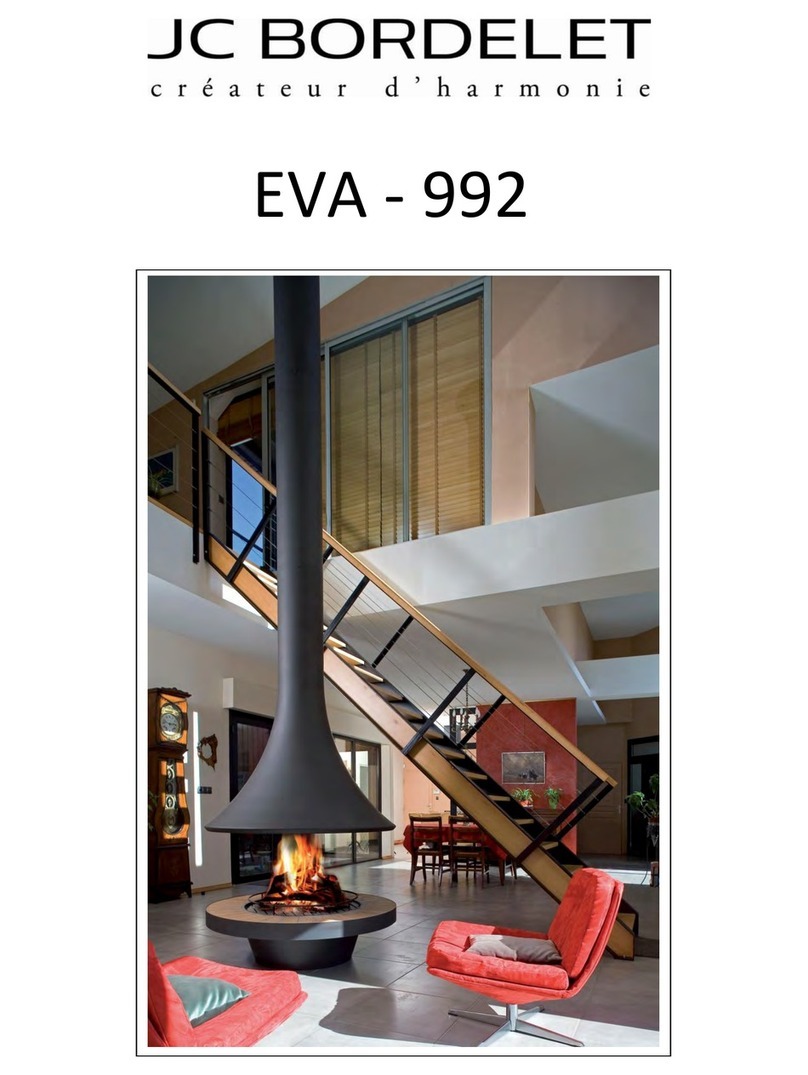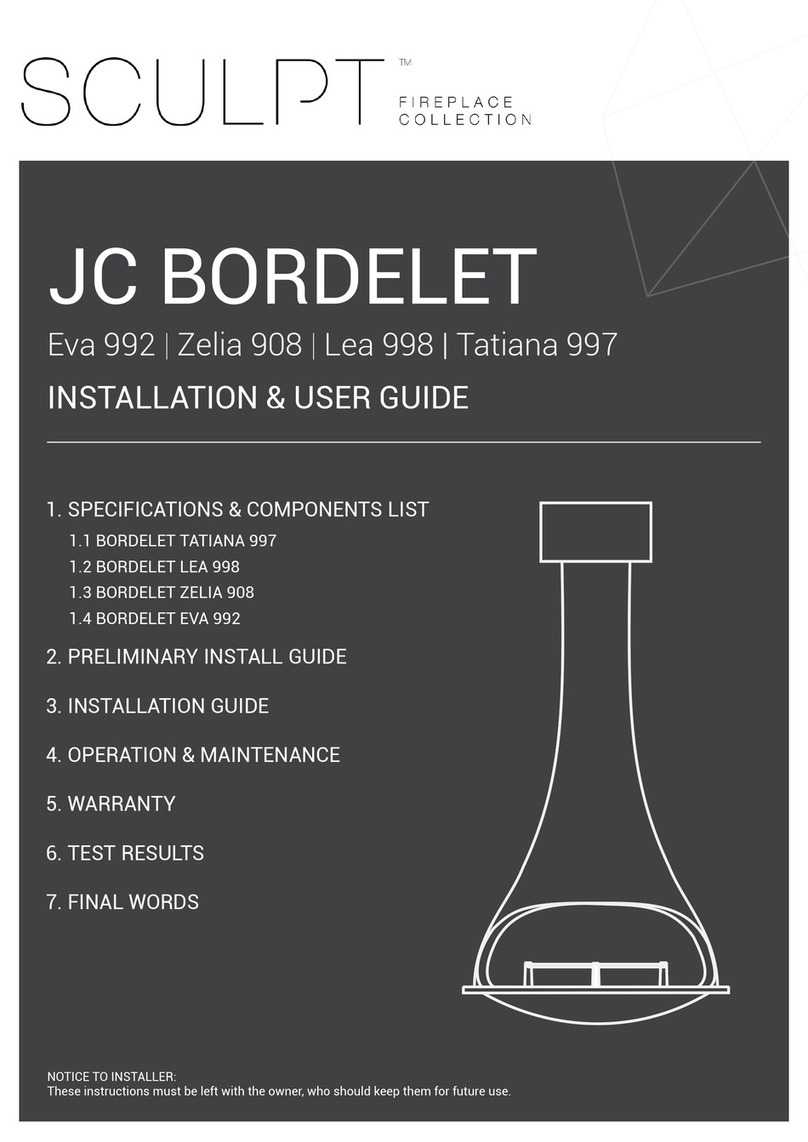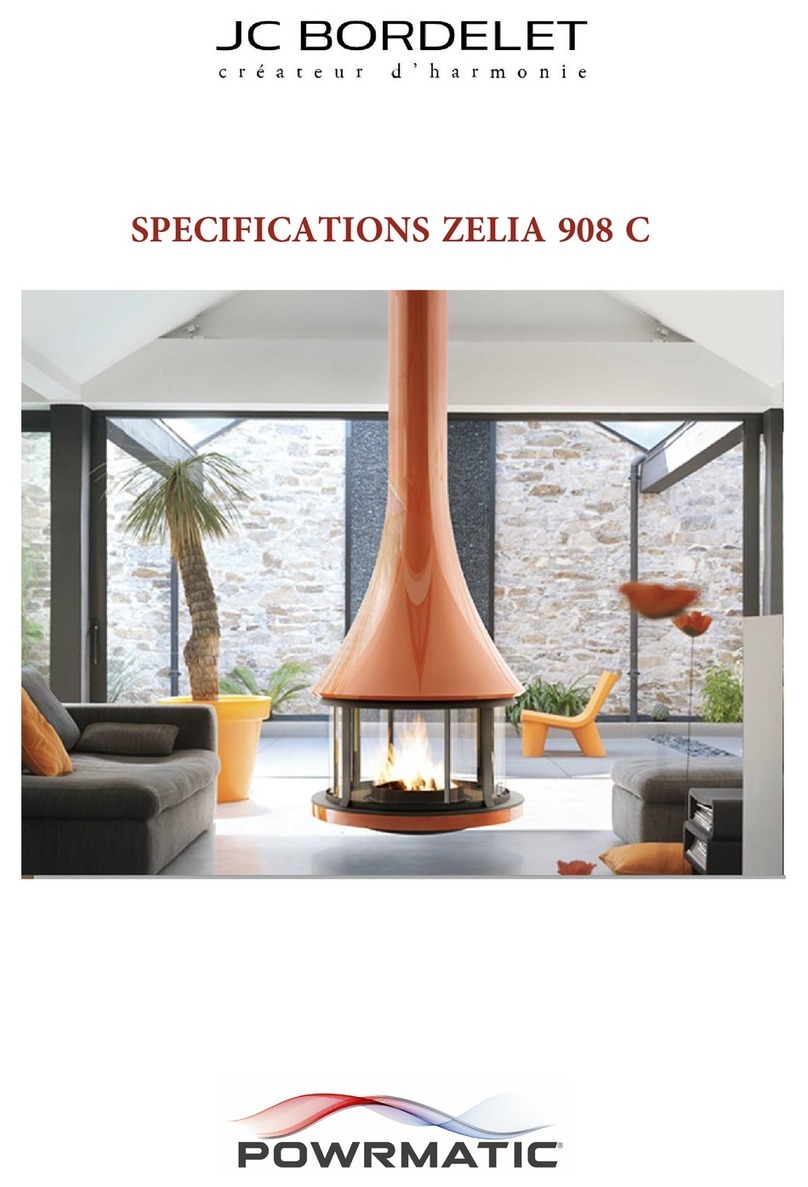
3. INSTALLATION GUIDE
If the TATIANA 997, ZELIA 908 and LEA 998, reach a height of more than 4 meters from floor to ceiling
then an Anti-Sway bracket must be installed to stabilize the installation and prevent oscillations which
might, in the long run, loosen fasteners.
If the EVA 992 and LINEA 914 reaches a height of more than 5 meters from floor to ceiling then an Anti-
Sway bracket is highly recommended.
Centred on the planned location of the replace, install a hearth made of approved non-combustible
material such as ceramic tiles, stone, masonry or concrete etc.
4. INSTALLING THE HEARTH NON-COMBUSTIBLE
7. INSTALLING ANTI-SWAY BRACKET
For added height (floor to ceiling), install the additional pipes (if required), onto the dropper box (using
the 3 screws TF M8x16).
Air intake is essential for the proper operation of the appliance, if installed in a well insulated/ 6 or
more star rated home. The air intake should be located in an area vented to the outdoors or in an area
exposed to non de-pressurised prevailing winds.
The air intake outlet should be located either directly in the chimney, or as close as possible to the
appliance. The air intake should be vermin proof.
MINIMUM FRESH AIR INTAKE
EVA 992, LINEA 914 AND TATIANA 997
• 300cm2
LEA 998 AND ZELIA 908
• 200m2
The connecting flue should not include more than two 45° offsets (i.e. more
than one non-vertical portion), the angle of these offsets should not exceed
45° with the vertical.
IMPORTANT: When a controlled mechanical ventilation includes an electric
extractor, it is absolutely necessary to stop operation of the replace. The
electric extractors of the kitchen, the bathroom, or the toilets, should also be
switched off when operating the replace.
LEA 998, ZELIA 908 AND TATIANA 997
Install the LEA 998, TATIANA 997 and ZELIA 908 onto the dropper box (or the additional pipe if
requested) with the lower shelf of the replace 450 mm above the nished hearth.
INSTALLING THE FIREPLACE
5. INSTALLING THE INTERNAL COMPONENTS
2. INSTALLING THE ADDITIONAL PIPES 6. AIR INTAKE
3. 45° OFFSETS OF CONNECTING FLUES
EVA 992 AND LINEA 914
Install the EVA 992 and LINEA 914 canopy onto the dropper box (or the additional pipe if required) with
the lower edge of the replace hood 820mm above the nished hearth. Make sure that all the fasteners
are tight. Centre the base of the EVA 992 and LINEA 914 on the non-combustible hearth in perfect
vertical alignment with the hood and bolt it down making sure that the exact 460mm clearance between
the canopy and the base is maintained.
TATIANA 997, LEA 998 and ZELIA 908
Install the baffle plate ensuring the flat surface is positioned upwards, proceed to gently position the
plate on the lugs located on the inside of the replace. Once in position ensure the plate sits securely,
the baffle plate should not rock or shift when touched if placed correctly. Install the ash pan and the ash
grate on the base of the replace, it should be noted an ash pan and baffle pleate is NOT supplied with
the TATIANA 997.
EVA 992 AND LINEA 914
Install the baffle plate ensuring the flat surface is positioned upwards, proceed to gently position the
plate on the lugs located on the inside of the replace. Once in position ensure the plate sits securely,
the baffle plate should not rock or shift when touched if placed correctly. Install the ash pan and the ash
grate on the base of the replace. Install the ring screw caps at the bottom of the base if necessary.
Install the 2 shutters at the bottom of the base, in case the replace is not connected to an air intake
from the floor.
3. INSTALLATION GUIDE
TYPE 1: WALL BRACKET
TYPE 2: CENTRAL BELT BRACKET WITH CABLE TIES
TYPES OF ANTI SWAY BRACKETS
MINIMUM
300MM FLUE
ANTI-SWAY BRACKET REQUIRED OPTION FOR 4000MM
HIGH(OR MORE) INSTALLATIONS
ADJUSTABLE
FASTENED BY SCREWS
TIGHTENING SCREWS
TIGHTENING NUTS

































